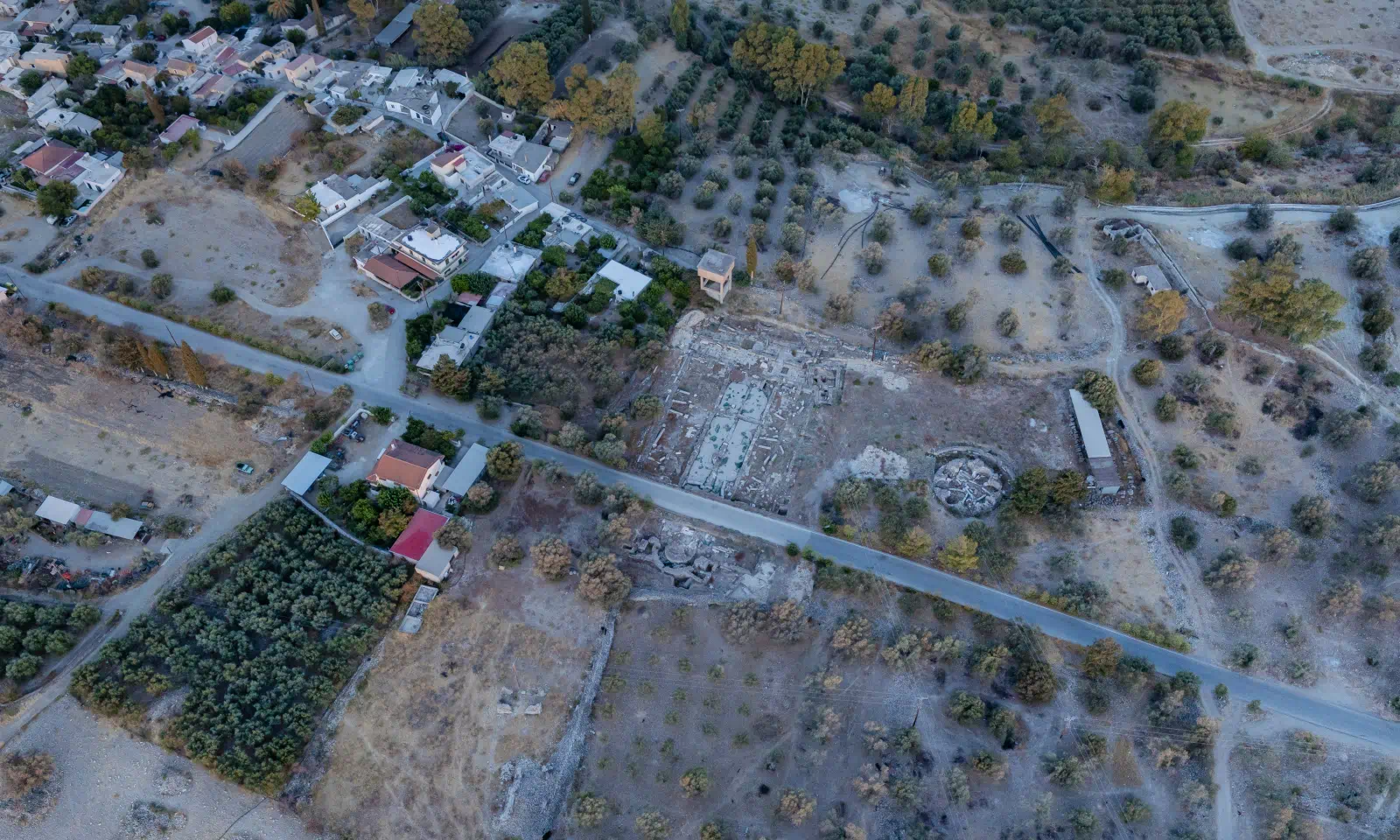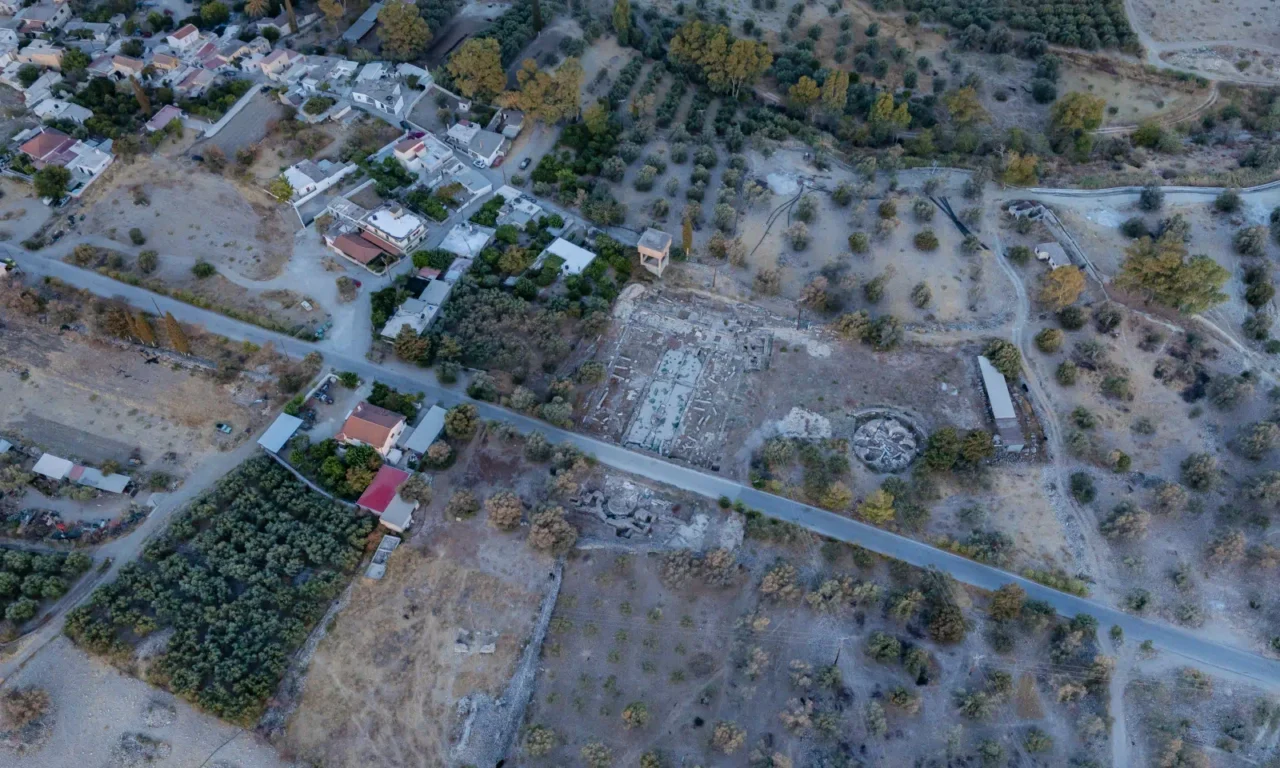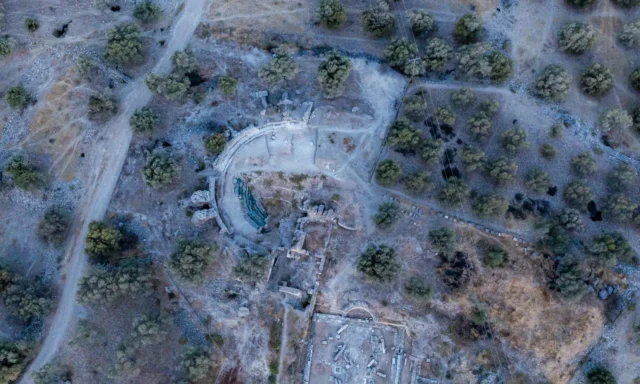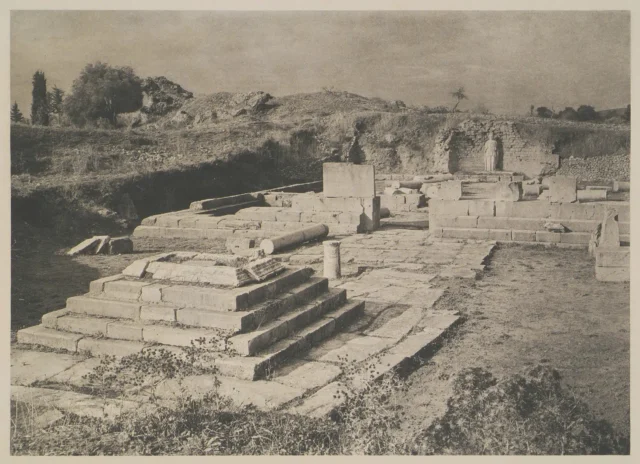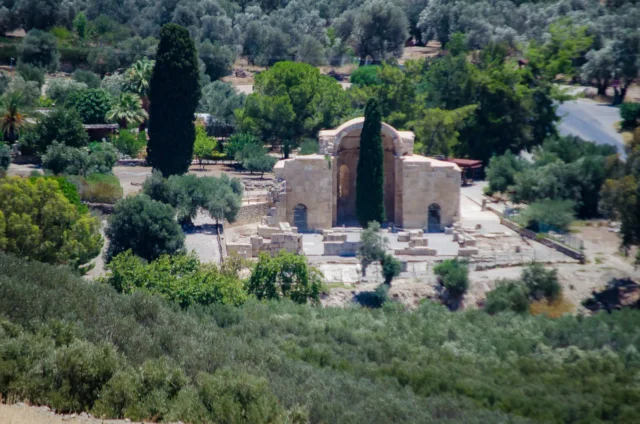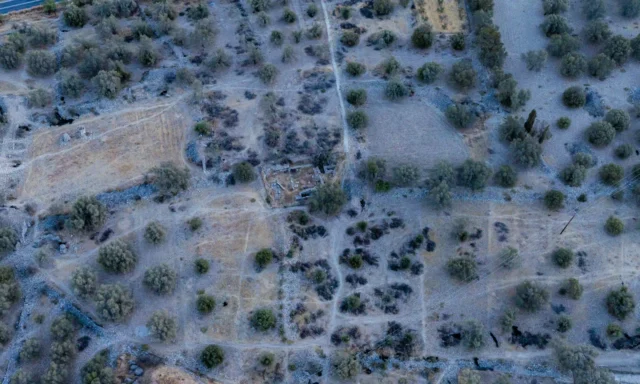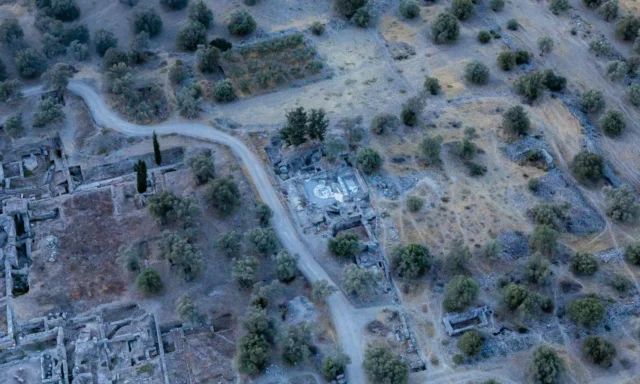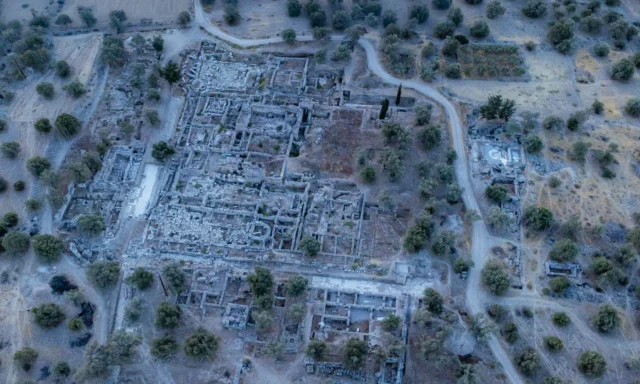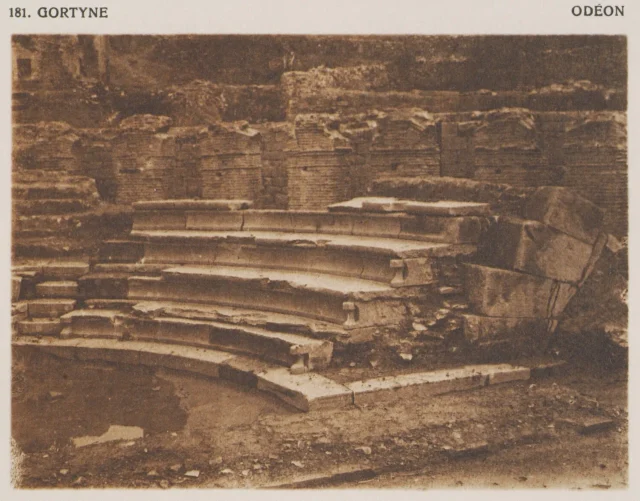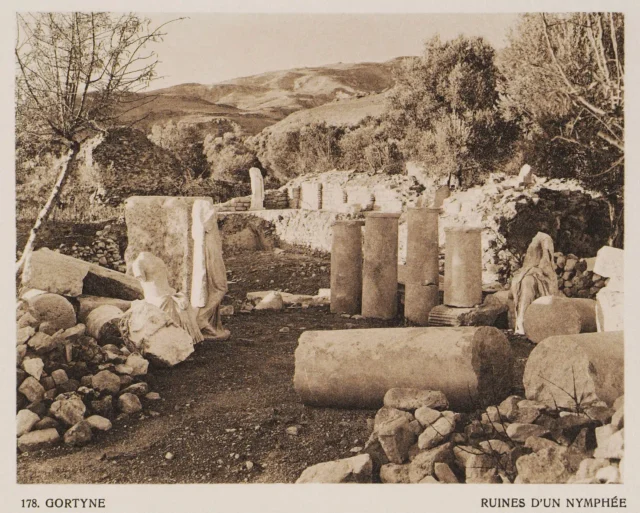The Episcopal Basilica of Gortyn, also known as the Mitropolis Basilica, was a significant religious center in the ancient city of Gortyn, Crete. It served as the seat of the archbishop of Crete during the Early Byzantine period. The basilica’s remains were discovered in 1978 and 1979 north of the modern settlement of Mitropoli (Metropolis), during excavations for the installation of a water supply network.
History of the Basilica
The basilica was built in the late 5th century AD and underwent a major renovation under Bishop Theodoros during the reign of Emperor Justinian I (527-565 AD). This is evidenced by an inscription on the mosaic floor. Another mosaic inscription indicates a further renovation during the time of Bishop Vetranius, likely after the devastating earthquake that struck Gortyn in the early 7th century AD. A third renovation is believed to have taken place during the tenure of Agios Andreas (Saint Andrew), the Metropolitan of Crete, in the first half of the 8th century AD. Around this time or shortly after, but definitely after the start of the Iconoclastic Controversy in 726 AD, the basilica received aniconic wall paintings.
The basilica’s final destruction is now placed at the end of the 8th century and is probably linked to the catastrophic earthquake of 795 AD. This earthquake, documented by Theophanes, is believed to have caused the ruin and abandonment of Gortyn and many other Cretan cities.
Architectural Features
The basilica was a grand and elaborate structure, reflecting Gortyn’s importance as a religious center during the Early Byzantine period. It was a five-aisled basilica with a transept, narthex, and atrium, covering a total area of at least 3,500 square meters. The aisles were divided by colonnades of thirteen columns, and the sanctuary featured a synthronon (a semicircular bench for clergy) with an ambulatory.
The basilica’s interior was richly decorated with mosaic floors, marble architectural elements in the Constantinopolitan style, and wall paintings. A separate, lavishly constructed baptistery further emphasized the basilica’s importance. The size and opulence of the basilica, along with its associated structures, suggest that the episcopal complex occupied a vast area, possibly including an episcopal palace and other auxiliary buildings that have not yet been uncovered.
Archaeological Site: Key Points
- Construction Period: Late 5th to 8th centuries AD
- Location: North of the modern settlement of Metropolis, Gortyna
- Dimensions: At least 3,500 square meters
- Historical Significance: Served as the seat of the archbishop of Crete during the Early Byzantine period, reflecting Gortyn’s importance as a religious center. The basilica’s architectural features and decorative elements provide valuable insights into the artistic and cultural trends of the time
- Current Status: The ruins of the basilica are preserved at the archaeological site of Gortyna. Excavations are scheduled to resume in the autumn of 2023 as part of a new five-year collaborative program between the Ephorate of Antiquities of Heraklion and the Italian School of Archaeology at Athens
References
- Sythiakaki, Vassiliki. 2014. “The Episcopal Basilica of Gortyn.” In Proceedings of the 3rd Meeting, Rethymno, 5-8 December 2013, edited by Pavlina Karanastasi, Anastasia Tzigounaki, and Christina Tsigonaki, 383-394. Rethymnon: Faculty of Letters Publications, University of Crete & Ephorate of Antiquities of Rethymnon.
- Baldini, Isabella, Chiara Barbapiccola, Yorgos Brokalakis, Veronica Casali, Silvia Donadei, Giulia Marsili, Lucia Orlandi, & Debora Pellacchia. 2015. “Preliminary results of investigations in the basilica of Mitropolis, Gortyn: The finds from Annex II.” In Archaeological Work in Crete 3, edited by Pavlina Karanastasi, Anastasia Tzigounaki, and Christina Tsigonaki, 585-603. Rethymno: Faculty of Letters Publications, University of Crete & Ephorate of Antiquities of Rethymnon.








